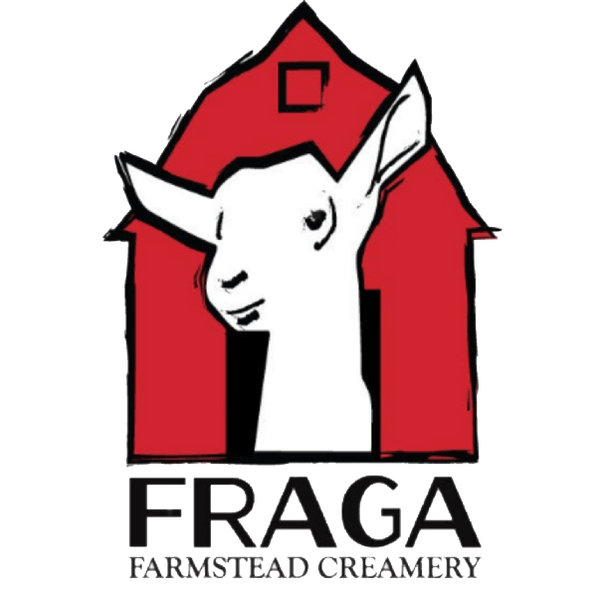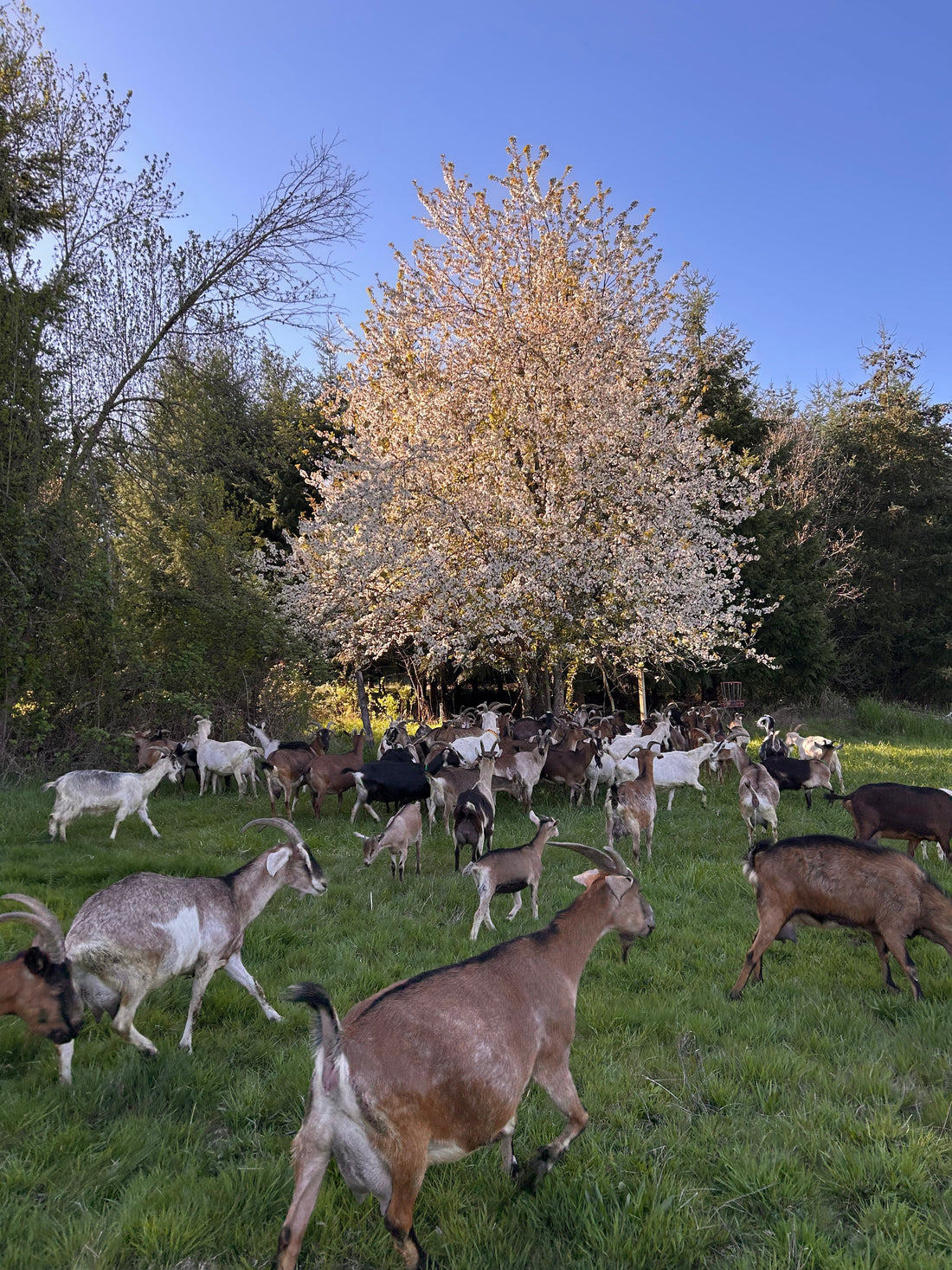Everything is growing like crazy this time of year—and our goats couldn’t be happier. Their annual cycle of kidding, nursing, drying off, and breeding again follows the rhythm of the land. Most goats are seasonal breeders, only coming into heat as the days begin to shorten after the summer solstice. Many large goat milk dairies manipulate the breeding season with lighting just like it is done in chicken houses to stimulate forever summer. We honor the natural cycle and by September, barnyard romances are in full swing, and most of our herd is getting pregnant.
Gestation lasts five months, carrying us through the darker days of winter when the goats spend more time lounging in the barn, munching on hay. While they have pasture access year-round, they’re not fans of rain. A sunny winter day, even with frost or snow, can lure them outside—but only if the sun is shining!
This rhythm isn’t just charming; it’s biologically perfect. Goats' nutritional needs soar while they produce milk, especially in spring when their kids are nursing and learning to graze. In nature, there’s no feeder full of hay—lush spring vegetation is essential.
It’s also one of our favorite times on the farm. The goats are overjoyed to head into new pasture, and even our older gals kick up their heels and frolic down the hill when called into a fresh paddock. Their enthusiasm is contagious. Our days are even more full of tasks alongside of making our goat farm skincare.
Our goats always have access to pasture, but the real feast begins when we open the seasonal pond pasture for rotational grazing. This area brims with diverse grasses, broadleaf forbs, and wild herbs—more than just grass. Goats are natural foragers, choosing a wide variety of plants that together contribute rich, complex flavors to their milk.
And grazing is good for more than just milk quality. Scientific studies have shown that moderate grazing benefits the land, too. When goats tear at plants, it stimulates grass root growth and improves the root microbiome. The act of grazing actually helps grasses thrive when properly managed—not too much, not too little.
Of course, goats being goats, fencing is always a challenge. As the saying goes, “If it can’t hold water, it can’t hold goats.” I was told by other goat milk diaries that it was near impossible to rotationally graze goats for that reason. We’ve tried many systems and landed on tall electric net fencing. Our kids learn young what that fence means, and it allows us to rotate the herd easily through new paddocks. “Running the goats to pasture” has become a beloved routine. Walking? Not really an option—they’re too frisky and eager to explore, so a brisk jog it is! See for yourself.
So if you don’t spot any goats lounging near the barn, they’re likely out in the meadow by the pond, grazing to their hearts’ content. At night they return to the barn, and the fence gets moved again—ready for a new day, a new pasture, and more delicious milk.
Even on rainy days, they aren’t without options—they stay closer to the barn, where our “free graze” pasture gives them a chance to snack between showers.
Happy goats. Healthy pasture. Amazing goats milk and cheese. That’s the cycle of life here at the farm.

